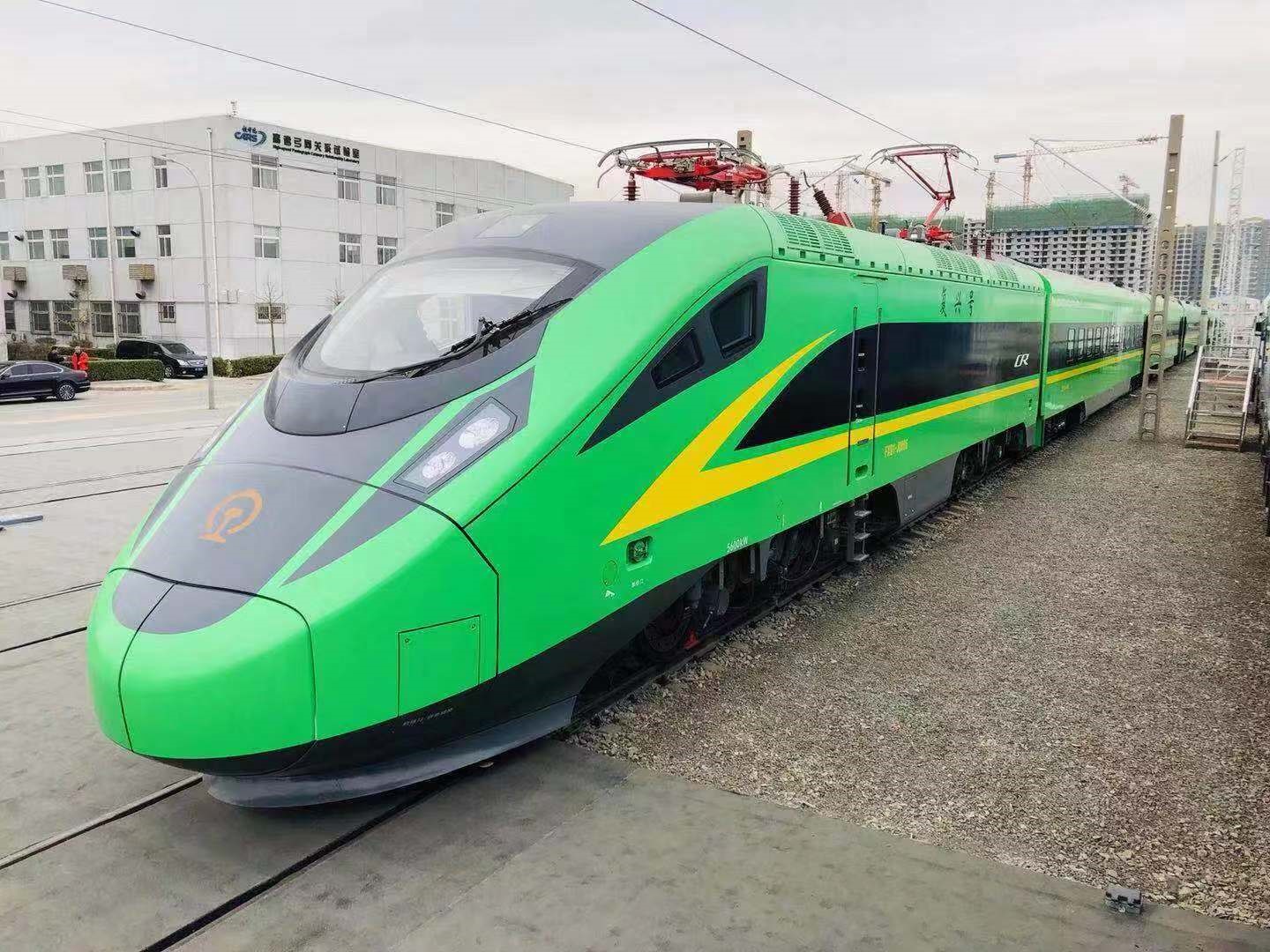
In November 2018, another new member of the family of Fuxing EMU series – "160km/h centralized power EMU" was successfully developed with the design finalized by CHINA RAILWAY and administratively approved by National Railway Administration (NRA).
The new 160km/h EMU divides into short marshalling and long marshalling where the short marshalling consists of one locomotive, seven trailers and one control vehicle with total seating capacity of 720 persons, while the long marshalling consists of one locomotive, eighteen trailers and one power vehicle with total seating capacity of 1,102 persons.
The EMU takes reference of existing design philosophy for integrated and optimal design in the aspects like appearance, interior decoration, seats, plane arrangement, sealing, train control, etc. Its core technology is advanced, mature, reliable and fully independent, and the operation & maintenance and passenger interfaces are exclusive and simplified.
The service speed is 160km/h and both the continuous traction power of dynamic wheel and the regenerative braking power are 5,600kW. Two short marshalling units may be connected for multiple-unit service.
It took three years to develop the 160km/h centralized power EMU centralized power. Since 2015 CHINA RAILWAY organized CARS, CRRC Tangshan, CRRC Zhuzhou Locomotive, CRRC Dalian, CRRC Nanjing Puzhen, etc. to conduct technical research on its overall technical conditions, locomotive, tractor and control vehicle, interoperability technology, test appraisal plan, etc. and finished the assignments like manufacture of sample train, train test, appraisal, expert review, etc.
The R&D and launch of 160km/h centralized power EMU can upgrade the technology of existing conventional passenger trains and give full play to the strength of fast, comfort, flexible marshalling, quick end switching, etc. that not only improves the passenger comfort, the overall technology level of existing conventional trains and the whole railway transport efficiency, but also makes better use of the existing repair and maintenance resources with less input but higher cost efficiency.
 附件:
附件: